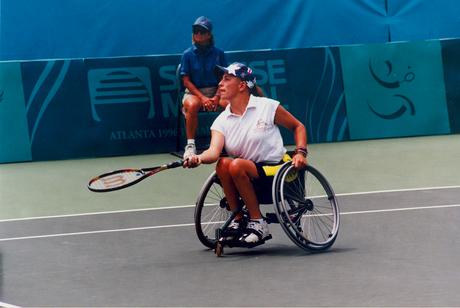
What do these games teach us about strength?
So much of my identity is contingent upon my strength. Before the development of my disability, I filled all of my spare time with sports. I played everything —competitively. My pride was deeply rooted in a rough exterior and an ability to perform physically that set me apart from many of my peers. At the age of thirteen, however, the discovery of stress fractures, joint dysfunctions, and other similar issues completely uprooted me from an identity I had worked so tirelessly create. I am now unable to perform any sort of physical activity beyond the boundaries of physical therapy. My story is just one of approximately one billion of those of us who experience some form of a disability.
As the 2016 summer Olympics progressed, articles regarding sexism in sports — and the Olympic games in pariticular — inundated my social media newsfeeds. But while justified and necessary, this intense media attention on “sexism in the Olympics” also elides conversations about any other oppressive structures at play in these games. Specifically, I have not seen any articles or conversations that adequately interrogate the Olympics through a disability-conscious lens, or fundamentally question the potential implications of our global idolization of these athletes. Ultimately, this lack of comprehensive coverage problematically solidifies a problematic global obsession with physical performance and strength.
Trust me, I love watching Olympians continuously defy the previously understood limitations of the human body just as much as anybody else. I admire the strength and resilience of figures like Simone Biles, Gabby Douglas, and Simone Manuel, who not only compete, but dominate in sports that especially exist within a long history of patriarchal white supremacy. The critique I present in this piece is not one of athletes themselves, or even of the Olympics as an event, but one of the equation of physical strength to a sense of superiority and cultural, bodily, and spiritual wholeness. Through our cultural fascination with sports — the way we allow them to significantly define national identities, their crucial place within our global economy, and so on — we learn to privilege and conflate physical ability with sentiments of power, pride, discipline, and fulfillment. This idealized vision of completeness is yet another reminder to those of us with disabilities that this is not a world built for us.
The marketing strategies of athletic companies like Nike, Adidas, and Puma, which are contingent upon the active shaming of immobility, demonstrate this point well. In many of these advertisements and commercials, movement is empowering. It is portrayed as both the means and ends by which self-fulfillment may be achieved. By contrasting actions like “sitting on the couch” with the company’s image of exercise, these corporations use a caricature of immobility that is explicitly labeled as shameful. In recent campaigns, companies have also identified “strong” as “the new beautiful.” In a problematized effort to include more body types into a western ideal of beauty, athletic companies have yet again contributed to phenomena such as fat-phobia and ableism. In fact, body type and disability are incredibly influential on one another, and many people who do not fit within rigid standards of beauty and strength experience some form of disability.
Some may argue that the paralympics are specifically designed to counter the exclusion of disabled athletes at the Olympics, but an examination of these events reveals how rigid standards of strength and physical performance still invade even those spaces designed to counter them. A narrative of “overcoming” plagues these games, insisting that athletes are able to rise above their disabilities in order to achieve the same glory the able bodied athletes do. While I applaud the courage, dedication, and talent of these athletes, the games themselves remind us again how prized physical strength is within our societies. One of the main purposes of the paralympics is to prove — or, at the very least, demonstrate — how physically disabled athletes can perform at the same level as able-bodied athletes. This sort of thinking lends itself to a dangerous culture in which people believe that those who generally experience oppression can “rise above their struggles” to supposedly gain the same benefits the structurally privileged maintain. Why must physically disabled persons perform at such an intense physical level for them to receive unconditional admiration? For many of us who are physically disabled, the paralympics would never present itself as a feasible option. Why can’t we move past a framework that equates physical strength to psychological and moral strength altogether?
I want, more than anything, to feel strong and complete and independent. Everywhere I turn, however, I am reminded time and time again that these ideals of strength and fulfillment can exclusively be achieved via physical conditioning and mobility. While sports do present a crucial space for many to discover, endure, and achieve, it is crucial that we open up more possibilities for those goals of fulfillment that exist in other spheres.

